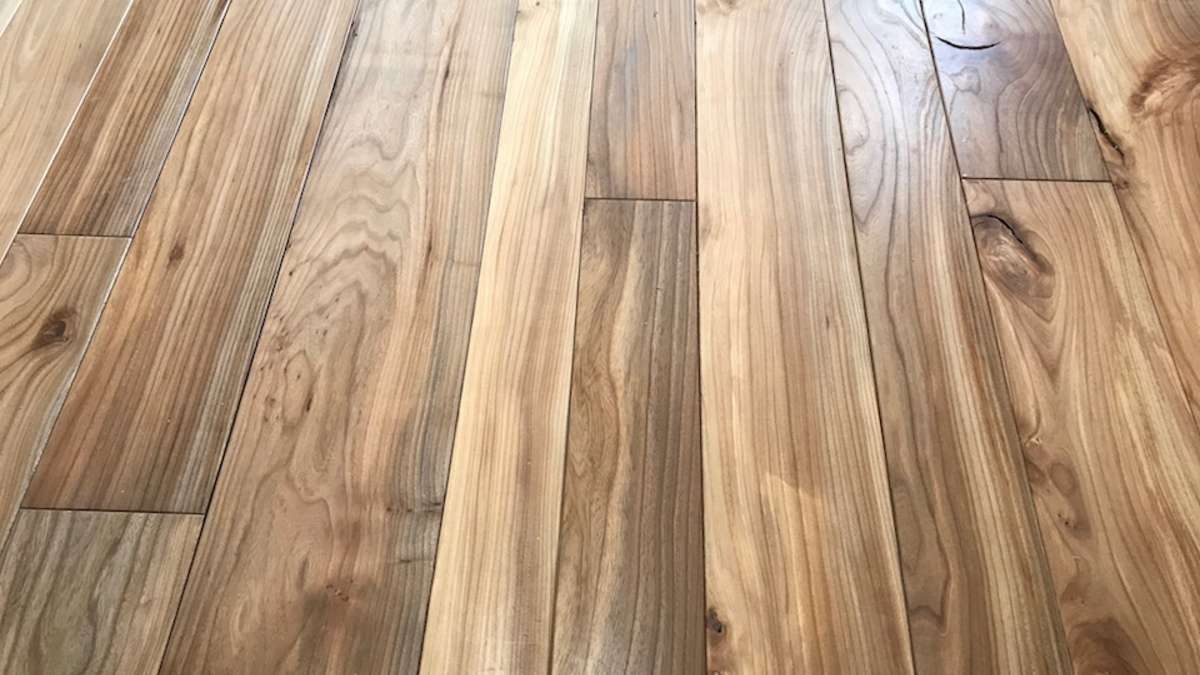The edges of wood flooring boards are something to which many people may not give much thought and we think it an important consideration when selecting you floor. Why? Because different edges create a completely different look and can transform the appearance of a new wood floor. So when choosing between square edged and bevelled edged it’s important to know what end result each offers.
SQUARE EDGE
Square edged flooring is made up of boards with a straight edge cut to exactly 90 degrees. When laid, the boards fit snugly together and where the boards meet, the join can hardly be seen. It offers a clean perfect look and avoids dust collecting in the gap. It is perfect if you are trying to achieve a contemporary, minimalist look. That said, it is a more difficult floor to lay. Extreme care needs to be taken when handling the boards to avoid any knocks which will affect the smooth and sharp edges of the board. We recommend using an experienced professional fitter when installing a square edged floor, unless your DIY skills are top notch!
Square edged flooring can be a more expensive option. Not only because of the technicalities of laying the floor but the sub-floor needs also to be considered. If it is not completely level it can leave your square edged floor visibly uneven. Further to this, square edged flooring may require sanding after the floor has been laid as the square edge will not hide any slight differences in the height of the boards.
BEVELLED EDGE
Bevelled edged flooring is made from boards finished with a slight ‘V’ at the top of each board. This is achieved by making a small edge of about 1mm at a 45 degrees along the length of the board. When two boards are pushed together it creates the ‘V’ – this is the bevel. A more pronounced ‘V’ is termed bevelled and a less obvious is a micro-bevel. This feature is achieved either by hand or machine. Most bevelled boards are machine made these days however, bevelled edged boards can be made by hand, creating a very rustic floor.
On choosing a bevelled board, no matter whether it’s a full bevel or a micro bevel, there will be an obvious separation between the edges of each board creating more definition from a distance. It is considered to create a less fragile floor with a more defined edge. Perfect for installations where the sub floor is not completely level it can help to hide any minor uneven areas. Slightly more of a dust trap than a square edged or micro-bevelled floor any grime is easily removed by gentle vacuuming with soft bristled brush.
MIRCO-BEVELLED EDGE
A less pronounced ‘V’ a micro-bevelled edge is often preferred by those seeking a natural looking floor. The micro-bevel creates a more subtle distinction between each board. A micro-bevel does not collect as much dust as a standard bevel and is suited to most styles of flooring. Often chosen where a lighter toned floor is required as the bevels are less prominent giving the floor a clean contemporary look.
HOW TO DECIDE
Hopefully the above information will help you make a more informed decision. It really is personal choice, but focus on the style of your property and the look you are hoping to achieve. Consider your budget and any costs involved. If you are decided on a smooth sleek finish a square edged floor is definitely the way forward. However, if you prefer a floor with a slightly more natural or rustic look opt for bevelled or micro-bevelled flooring. If you require any further information please call us on 07721 536208 or email sales@www.suttontimber.co.uk will be very happy to advise you further.


